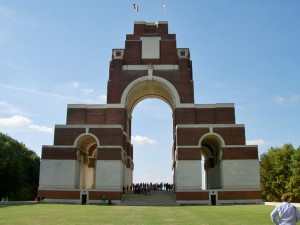 It comes as a bit of a surprise at first to realise that the Somme does not automatically have to be associated with the horrors of the First World War (la Grande Guerre), but does in reality apply to a French département, a river and a bay where “normal” and pleasant life continues as it has done for decades before and after.
It comes as a bit of a surprise at first to realise that the Somme does not automatically have to be associated with the horrors of the First World War (la Grande Guerre), but does in reality apply to a French département, a river and a bay where “normal” and pleasant life continues as it has done for decades before and after.
The river has always been famous for fishing – along with the “Etangs” or ponds/small lakes which pepper the area. Indeed the département is predominantly rural and full of nature reserves. The Bay of the Somme, where the river Somme meets the English Channel (or la Manche) is famous for its wild bird sanctuary and habitat, The flatish coastal strip also makes ideal cycling territory, especially as there are many kilometres of well-signposted and surfaced cycling paths.
Personally I do not much like the main towns – Amiens in particular as I was stranded there for 2 days a few years back when the car broke down on my way back to the UK. So I probably was not in the best frame of mind – but it does have a magnificent Gothic Cathedral which is unfortunately overshadowed (almost literally) by a ghastly tall concrete tower – le Tour Perret – built after the War as a symbol of modernism.
However, there are some pleasant small towns/resorts along the coast such as Eu, le Tréport and le Crotoy.
As for the battlefields, this July marks the 90th Anniversary of the Somme which lasted for over 140 days and which claimed so many lives. The biggest memorial is at Thiepval (see picture) which is a memorial to the missing – over 70,000 whose bodies were never found. It is not a particularly likeable structure, but the size of it is impressive (never truly conveyed in a photo) and its meaning uncompromising. Visit on a cold dreary November day for best effect!
Nearby is the battlefield of Beaumont-Hamel, which provides some excellent insights into the reality of the battle, and especially of the brave exploits of the men of Nova Scotia in Canada who fought so heroically so far from their homeland. There is a very good visitor centre, and if you have only limited time this is the place to visit.
At Peronne there is the Historial de la Grande Guerre see www.historial.org/ which is an impressive museum and reference centre for the war, but lacking the immediacy of a real battlefield.
The opening chapters of Sebastien Faulk’s “Birdsong” captures some of the tranquility of the region in the period immediately before the war – the rest of the book providing a very real sense of the realities of fighting in Picardy.
For more the visiting the Somme see www.somme-tourisme.com
Discover more from FrenchDuck.com
Subscribe to get the latest posts sent to your email.